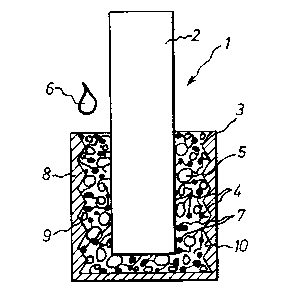Some of the information on this Web page has been provided by external sources. The Government of Canada is not responsible for the accuracy, reliability or currency of the information supplied by external sources. Users wishing to rely upon this information should consult directly with the source of the information. Content provided by external sources is not subject to official languages, privacy and accessibility requirements.
Any discrepancies in the text and image of the Claims and Abstract are due to differing posting times. Text of the Claims and Abstract are posted:
| (12) Patent: | (11) CA 1338930 |
|---|---|
| (21) Application Number: | 1338930 |
| (54) English Title: | IMPLANT AND METHOD OF MAKING IT |
| (54) French Title: | IMPLANT ET METHODE D'OBTENTION |
| Status: | Expired and beyond the Period of Reversal |
| (51) International Patent Classification (IPC): |
|
|---|---|
| (72) Inventors : |
|
| (73) Owners : |
|
| (71) Applicants : |
|
| (74) Agent: | GOWLING WLG (CANADA) LLP |
| (74) Associate agent: | |
| (45) Issued: | 1997-02-25 |
| (22) Filed Date: | 1989-06-13 |
| Availability of licence: | N/A |
| Dedicated to the Public: | N/A |
| (25) Language of filing: | English |
| Patent Cooperation Treaty (PCT): | No |
|---|
| (30) Application Priority Data: | ||||||
|---|---|---|---|---|---|---|
|
An implant (prosthesis) comprises biological ma-
terial in its surface intended to face the body tis-
sue. The surface is formed of a layer (3) consisting
of a mixture of grains (5) of tissue-compatible type
and disintegrated tissue-compatible biological mate-
rial (4).
In a method of making the implant, an implant bo-
dy (2) and a mixture of grains (5) of tissue-compatible
type and disintegrated tissue-compatible biological
material (4) as well as a nutrient solution (6) for
the latter are placed in a mould (8). The biological
material is allowed to grow in the mould, both out to
the boundary wall of the mould cavity and in to the
implant body.
Note: Claims are shown in the official language in which they were submitted.
Note: Descriptions are shown in the official language in which they were submitted.

2024-08-01:As part of the Next Generation Patents (NGP) transition, the Canadian Patents Database (CPD) now contains a more detailed Event History, which replicates the Event Log of our new back-office solution.
Please note that "Inactive:" events refers to events no longer in use in our new back-office solution.
For a clearer understanding of the status of the application/patent presented on this page, the site Disclaimer , as well as the definitions for Patent , Event History , Maintenance Fee and Payment History should be consulted.
| Description | Date |
|---|---|
| Inactive: IPC expired | 2020-01-01 |
| Inactive: IPC expired | 2020-01-01 |
| Time Limit for Reversal Expired | 2007-02-26 |
| Inactive: IPC from MCD | 2006-03-11 |
| Inactive: IPC from MCD | 2006-03-11 |
| Inactive: IPC from MCD | 2006-03-11 |
| Inactive: IPC from MCD | 2006-03-11 |
| Inactive: IPC from MCD | 2006-03-11 |
| Inactive: IPC from MCD | 2006-03-11 |
| Letter Sent | 2006-02-27 |
| Inactive: Entity size changed | 2004-02-25 |
| Inactive: CPC assigned | 1999-03-10 |
| Letter Sent | 1998-03-05 |
| Grant by Issuance | 1997-02-25 |
There is no abandonment history.
| Fee Type | Anniversary Year | Due Date | Paid Date |
|---|---|---|---|
| Registration of a document | 1997-10-03 | ||
| MF (category 1, 2nd anniv.) - small | 1999-02-25 | 1999-02-02 | |
| MF (category 1, 3rd anniv.) - small | 2000-02-25 | 2000-02-03 | |
| MF (category 1, 4th anniv.) - small | 2001-02-26 | 2001-01-31 | |
| MF (category 1, 5th anniv.) - small | 2002-02-25 | 2002-01-28 | |
| MF (category 1, 6th anniv.) - small | 2003-02-25 | 2003-02-05 | |
| MF (category 1, 7th anniv.) - standard | 2004-02-25 | 2004-02-04 | |
| MF (category 1, 8th anniv.) - standard | 2005-02-25 | 2005-02-03 |
Note: Records showing the ownership history in alphabetical order.
| Current Owners on Record |
|---|
| LANKA LIMITED |
| Past Owners on Record |
|---|
| INGRID BRUCE |
| LARS BRUCE |